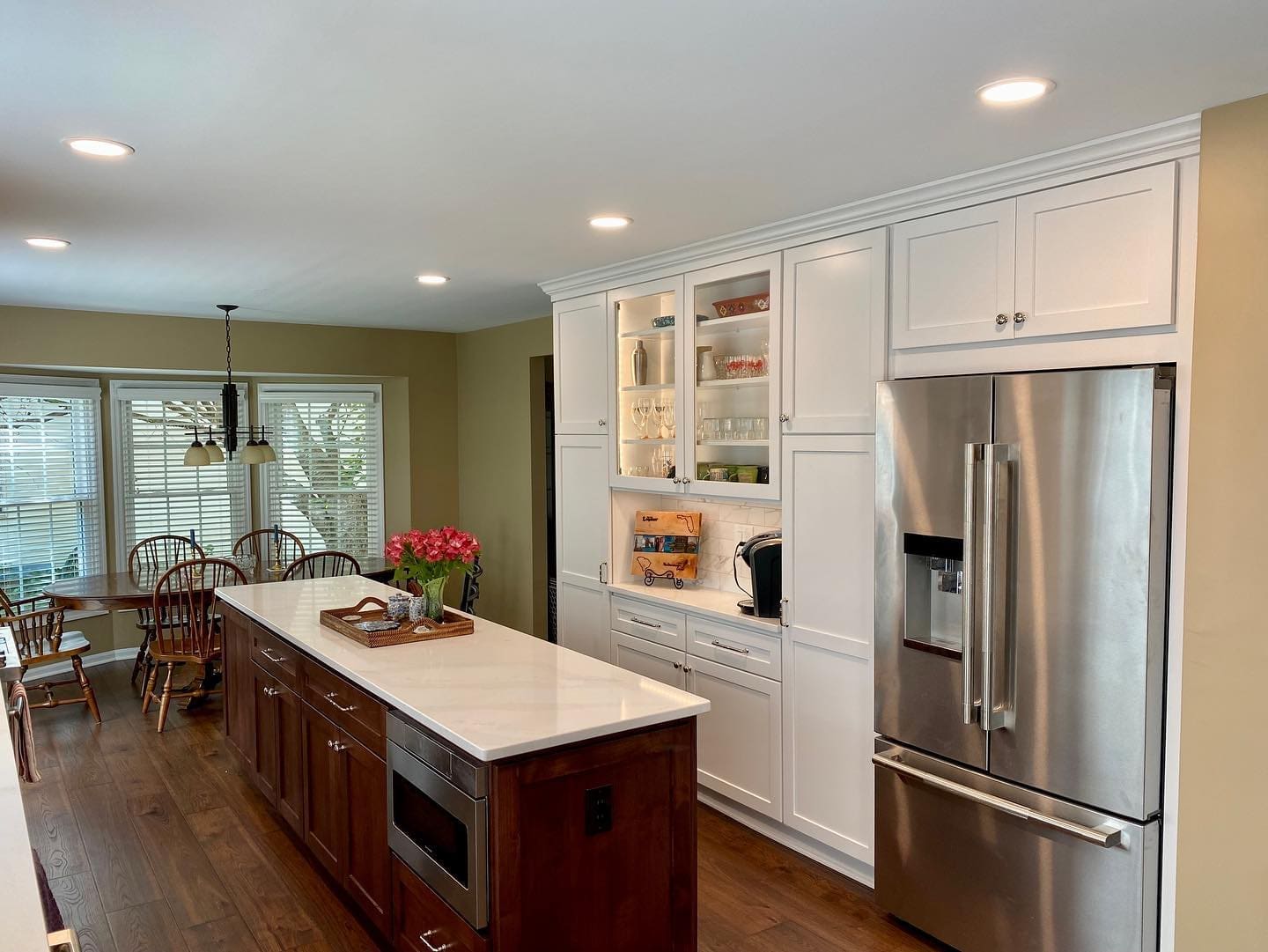 The new kitchen has been painstakingly crafted. Every feature and component of this glorious D.C. kitchen design has been intentionally and responsibly attended to. The countertops gleam and reflect the warming glow of perfectly stationed lighting fixtures. The cabinetry, fresh and detailed with the balance of structure and design will enhance its everyday calling to use. The kitchen sink and faucet, poised in flawless, streamlined clarity await its maiden voyage. The broad, picturesque window glows with the morning’s radiance of natural sun, but remains untouched by the artist’s hand–the final touch which will grant this new D.C. kitchen its warranted place among the finest ever shown.
The new kitchen has been painstakingly crafted. Every feature and component of this glorious D.C. kitchen design has been intentionally and responsibly attended to. The countertops gleam and reflect the warming glow of perfectly stationed lighting fixtures. The cabinetry, fresh and detailed with the balance of structure and design will enhance its everyday calling to use. The kitchen sink and faucet, poised in flawless, streamlined clarity await its maiden voyage. The broad, picturesque window glows with the morning’s radiance of natural sun, but remains untouched by the artist’s hand–the final touch which will grant this new D.C. kitchen its warranted place among the finest ever shown.
Effecting the Drama
The shape, style and configuration of the kitchen window itself will play a significant role as to which type of window treatment that should be used in clarifying and defining this special and unique D.C. kitchen feature. The specific treatment needs to enhance the geometric novelty of whichever window design that has been chosen. For example, if your kitchen window possesses a radius window at the top, it’s very important to address this radius by avoiding a dressing that either barricades this radius or addresses it as if it were a square or a rectangular shape–allow the radius to be aptly expressed. Also, if you have a wide window space that is comprised of 3-4 long narrow sashes, address each sash singularly rather than draping them as one, with the exception being a valance used as your solitary treatment. The idea is to bring out the detail in this important feature of your new D.C. kitchen.
Sheer Delight
Window dressing, curtains and valances in particular, are a terrific means to add some much needed, brighter colorations into your kitchen. This is a treatment that allows you to be daring and expressive with your kitchen décor without detracting from the more notable features of your new kitchen space. In creating this effect, however, it’s also important that you permit the sun to shine through. Unlike a living room or dining room window treatment, you’ll want to capitalize on the natural effects of the sun as it slips through the fabric, illuminating the colors of the treatment. The fabric, therefore, should be sheer–permitting the sun to do its glorifying task. It is perfectly acceptable, however, to engage a valance that may be impermeable to natural light and promoting its own stately or commanding coloration, but such ‘toppers’ should be used as accents and have minimal representation in mass.
Introducing Wood
Blinds and decorative shutters which are fashioned out of wood are an excellent means to introduce a little more texture into a space that is otherwise devoid of contour or inconsistent surface. Wooden venetian blinds or delicately woven bamboo roman shades offer a natural warmth and informality to a kitchen that may be too stark or sterile. Even painted, these types of window treatments will add to the irregular texture your kitchen may be begging for. These blinds may also tend to the desire of abject privacy at nighttime, for those who so require such security. Shutters offer a quaint country appeal that cannot be replicated by other treatments while, again, assisting in creating the required component of texture.
Mixed Fashions
It is also perfectly appropriate to address a window space in your new D.C. kitchen with two distinctly different types of window treatments. Typically, the sashes may be concealed delicately with a pleated or cellular shade and then topped and swagged with a fabric which will compliment the entire window décor. You may also opt to address the sashes with wooden treatments and further compliment the space with the addition of a coarsely woven, yet sheer, valance and swags. Whichever direction you or your decorator decide upon, be certain to enhance and capture the beauty of the natural sunshine!





